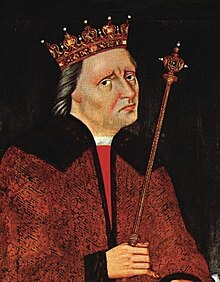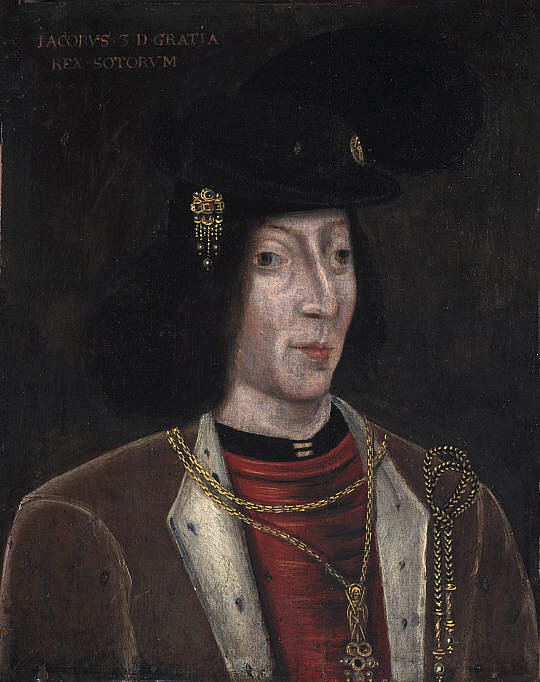| King Christian of Denmark, Norway and Sweden was in need of the services of a pawn broker. |
You know how it is. An unexpected
expense arises, say your 30 year old
refrigerator goes on the fritz.
Money is tight. Hell, you
just replaced the dryer and you need a brake job.
You are short on ready cash and
the credit cards are maxed out. What can you do? Maybe scrounge
around the house for something that
might be valuable, hopefully something you
don’t use much or even like. The Stairmaster you ordered on a health kick five years ago and is now drying rack for towels. Aunt
Martha’s ugly vase that you were
always warned not to touch because it’s worth a fortune. Or, in a pinch, some old gold jewelry from the back of your wife’s little dresser top chest that she doesn’t
have anywhere to show off anymore and you pray she won’t miss for a while.
You haul the crap down to Moe’s Loan and Groan, the local pawn broker, and negotiate for some fast cash to get you out of the jam.
If you hit the lottery or
your bastard boss gives you the raise you so richly deserve, maybe you redeem the ticket. If not, well, it is very little skin off your nose until
the wife finds out the jewelry.
 |
| No wonder King Christian I looks so sad--he had to pawn some perfectly fine islands. |
That
is sort of the position King Christian I
of Denmark, Norway and Sweden found himself in. It was 1472 and his majesty had to come up
with a big fat dowry he had been forced to pledge to James
III, King of Scots to unload his
daughter, Margaret of Denmark.
That
match was forced on the monarch by the biggest bully in the neighborhood,
Louis XI of France, an inveterate schemer. Louis wanted to force an end to long, low grade but expensive
war between the Danes and Scotts over taxation
rights to the Hebrides Islands
that raged from 1428. In 1460 Louis
forced the betrothal of the four
year old Margaret to the just crowned James III. The marriage was sealed in July 1468 at Holyrood
Abbey in Edinburgh when the lovely bride was 13 and James was a
seventeen year old horse faced mope.
More
than two years later the fat promised
dowry had not been paid and the Scots were breathing down King Christian’s neck for their cash. The
king had blown his wad in a long war
with the German Hansiatic League and
was busy putting down costly rebellions
in Sweden. Desperately, he scrounged around for assets to raise money. He found them in the Orkney and Shetland Islands,
possessions of Norway in his pan-Scandinavian kingdom since the days
of the Vikings. As a Dane, he considered this part of the old Norse patrimony expendable.
So
on February 20, 1472 he pawned them, to the Scots for the value of the dowry. He never bothered to re-pay the guarantee,
so Scotland has held onto the islands
ever since. The probably can show you the pawn ticket if you ask them nicely.
| The ruggedly beautiful Orkney Islands are the site of some of the most important Bronze Age archeology sites in Eruope including ample evidence of long Norse ownership and occupancy. |
The
rugged Orkneys, now known to be the
home of some of the oldest Bronze Age settlements in the orbit of the British Isles, had long been a Norwegian
fiefdom, but Scot settlers had
become most of the population. The current Norse Earl of Orkney was Scot William
Sinclair. Instead of transferring the holding to allegiance to the
Scottish Crown, James claimed the islands as his direct holdings. Sinclair,
an innocent bystander to the Danish/Scot transaction,
was compensated by lands around Castle Ravencraig and created Earl of Caithness.
If
all of this seems exhaustingly complex,
you should have tried living through it.
As
is often the case, the holder of the pawned security—the
Scots—came out way ahead of the pawner,
Christian, who got nothing out of
the deal but a truce on his western
flank and a relief from dun notices. The Scots gained two long cherished island possessions and a lovely young Queen who was soon beloved and admired by her
new subjects. Certainly more beloved
and admired than her husband Henry who was at constant odds with his family and most of his nobles and pursued
a highly unpopular policy of alliance
with the ancient Scottish enemy England.
_by_Hugo_van_der_Goes.jpg) |
| Margaret of Denmark at her wedding at age 13 was much too nice a person to be caught up in the whole sordid affair. |
Margaret,
styled Queen Consort and thus without any direct political power, gave birth to three sons, including the future
King James IV. She was kind and gracious and gave good
council to the headstrong king when he would accept it. Many nobles devoutly wished that she, rather than her husband ruled.
In
1479 the King’s policy of reconciliation
with the English collapsed into
intermittent warfare along the
border followed by an 1481 full
scale invasion of Scotland by Edward
IV in whose Army was James’s
brother Alexander, Duke of Albany now
being presented by the English as a Scot
pretender Alexander IV. James
moved to lead an army against the
invaders, but leading nobles arrested
and imprisoned him and set up a brief
regency under Lieutenant-general
Albany.
The
English failed to seize Edinburgh
and retreated, satisfied with
territorial gains along the border.
During this time Margaret seemed much more concerned to the safety of her sons than for the fate of her husband under arrest. James eventually contrived to bribe leading
supporters of his brother to switch
sides and with his English supporters gone, Albany fled and James resumed power. The episode
put a strain on the marital relationship
and Margaret began spending as much time
as possible away from the king, residing at Castle Sterling.
Margaret
died under somewhat mysterious
circumstances on July 14, 1486 at Sterling at the age of 32. She was deeply
mourned by the Scots. One son later suggested she had been poisoned, but historians cannot confirm this or lingering suspicions that her husband may have been involved.
 |
| James the III of Scotland was a mope, cad, and bumbling monarch in addition to being throw-a-bag-over-his-head homely. |
James,
at any rate, did not long outlive her. Rebellious
nobles including his own son and
the future king defeated and killed him at the Battle of Sauchieburn on June 11, 1488. He was not
widely mourned.
Historians rate James III
as a failed king whose sole lasting achievement during his
reign was the annexation of the
Orkneys and Shetlands in repayment of a pawn debt.
No comments:
Post a Comment